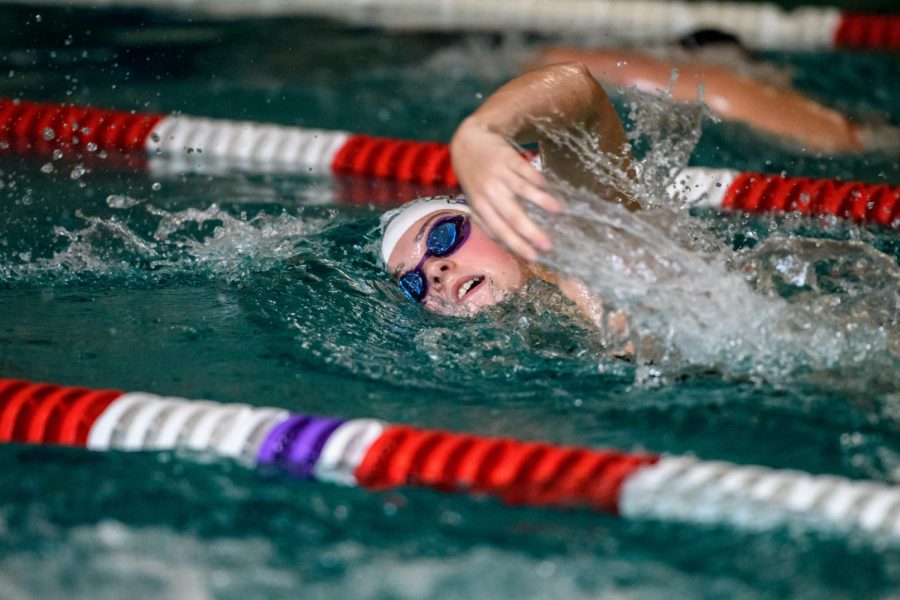Kelley Hungerford
Features editor
Stereotypes of scientists include images of mad Jekylls and Frankensteins poring over complex chemical reactions while locked up in bizarre laboratories filled with bubbling beakers and smoking test tubes.
But the Linfield Society of Undergraduate Chemists prefers a different environment for its experiments:
elementary school classrooms.
Sporting safety goggles and knee-length lab coats, LSUC and other Linfield volunteers visit local elementary schools to conduct simple science experiments and to explain the scientific method.
“One of our focuses is to go to the schools and introduce and expose them to science, specifically chemistry, which they don’t get much of,” junior Katie Sours said.
Sours, the LSUC secretary and public relations representative, said that many elementary-level standardized tests cover reading, writing and math, but not science.
Early in the year, Sours distributed fliers publicizing the opportunity to local schools. Interested teachers e-mailed her, and she coordinated the visits.
So far this year, LSUC has traveled to Newby and Sue Buel elementary schools and St. James Catholic School.
“We really like to have outside resources come into school,” April Logsdon, fifth-grade teacher at St. James, said. “The kids see their teachers all day long, so anyone else is exciting to them.”
At St. James, LSUC assisted students in making glitter
gak to demonstrate the concepts of polymers, phases of matter and the scientific method. Sours said they also emphasized safety in labs by wearing lab coats and safety goggles and telling the kids, “Don’t eat science.”
“They are still talking about their sparkle gak,” Logsdon said. “It was very memorable for them. They were proud to take it home to their parents and explain the scientific method.”
The Linfield volunteers distributed materials and helped students develop hypotheses about what would happen when the two liquids required to make gak combine.
Logsdon said the teachers stood back and let the college students teach.
“We enjoy it as much as the kids do,” she said.
Science students and LSUC members aren’t the only Wildcats making these trips. Senior art major Zach Mitlas heard about the program through SPURS honor society and said he was initially interested in the St. James visit because he needed service hours for the honor society.
Mitlas said he was also interested because he volunteered at St. James before to teach art to the children. He said he wanted to go back to say hi.
“The first time I went, I was all in clay and had dirty hands,” Mitlas said. “The second time, I arrived in a lab coat with science goggles, which prompted the kids to say, ‘Are you an artist and a scientist?’ to which I responded, ‘No. I’m just pretending today.’”
Knowing little about chemistry was not a problem, Mitlas said. In fact, he said that not being a science
student helped him on his St. James trip.
“Even the people involved in science learned more while they were there,” he said. “I also think because I didn’t know that much about the material it was easier for me to explain in basic terms for the students.”
All the volunteers said the elementary school students were already astoundingly knowledgeable about science. Sours said they knew more than she expected.
Freshman LSUC member Andrew Carpenter agreed.
“I probably couldn’t have given as good or descriptive definitions at that age,” he said.
Mitlas said the students came up with surprisingly complex hypotheses about the gak experiment.
“I thought they would be overtaken with the fact that these two liquids make gak, but to see them really understand what the materials were and how they were put together was really impressive to me.”
This isn’t the first school visit LSUC has organized. In the past, other visits have included making volcanoes from Play Doh, baking soda and vinegar, as well as freezing
objects with liquid nitrogen. A popular result of the latter was the “banana hammer” experiment, in which a frozen banana was used to hammer a nail into a board.
LSUC members have also served as judges in school science fairs.
In an attempt to gain the attention of the Linfield community, the society has organized on-campus events such as “The Science of Ice Cream,” which junior LSUC President-elect Victoria Treadaway said was so successful that it is planning to do another: “The Science of Chocolate.”
Treadaway said she has some ideas for next year’s school visit programs.
“I want to expand it to after-school programs because we have people in labs who can’t go,” she said.
In addition, Treadaway said she wants to increase the number of groups involved, broadening it to organizations such as Boy and Girl scouts, Kids on the Block and middle and high schools.
Elementary school teachers are also excited for the LSUC programs to develop.
“I would definitely like to see them come back and be here more frequently,” Logsdon said, adding that she and the other staff members appreciate the efforts of these Linfield students.
The experience is rewarding, Treadaway said, if anything just because of the enjoyment sparked in the
children.
“I like kids, and I like chemistry,” she said. “Sometimes the kids will say, ‘This is really cool! I want to be a
scientist now!’”

